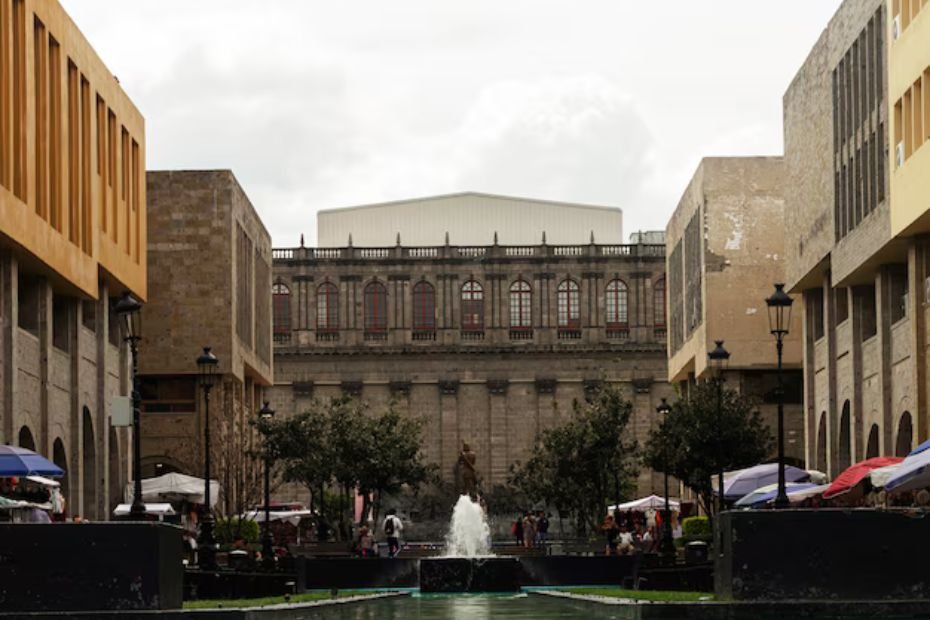New Orleans, a city known for its vibrant culture, delicious cuisine, and lively music scene, is also home to one of the most iconic neighborhoods in the United States: the French Quarter. With its stunning historic architecture, the French Quarter tells a story of the city’s rich history, blending influences from French, Spanish, and Creole cultures. This article explores the unique architectural styles, notable buildings, and the overall charm of the French Quarter, making it a must-visit destination for history and architecture enthusiasts alike.
Introduction to the French Quarter
The French Quarter, or “Vieux Carré,” is the oldest neighborhood in New Orleans, dating back to its founding in 1718. Its streets are filled with historic buildings, charming courtyards, and wrought-iron balconies that showcase the city’s distinctive architectural styles. The blend of cultures that shaped the French Quarter reflects the diverse heritage of New Orleans and is evident in its architecture.
Architectural Styles of the French Quarter
The French Quarter features a variety of architectural styles, each contributing to its unique character. Here are some of the prominent styles you’ll encounter:
French Colonial Architecture
- Characteristics: French Colonial buildings are characterized by their steeply pitched roofs, wide porches, and tall, narrow windows. These structures were designed to withstand the heat and humidity of the region.
- Examples: Look for buildings with large verandas and wooden shutters, which provide shade and ventilation. One of the best examples is the Cabildo, which was once the seat of colonial government.
Spanish Colonial Revival
- Characteristics: After the Spanish gained control of New Orleans in the late 18th century, they introduced the Spanish Colonial style. This style features stucco exteriors, red-tiled roofs, and decorative tiles.
- Examples: The St. Louis Cathedral, with its striking spires and intricate design, is a prime example of Spanish influence in the French Quarter.
Creole Townhouse
- Characteristics: The Creole townhouse is a unique architectural style that emerged in New Orleans. These homes typically have a narrow facade, two or three stories, and a central courtyard.
- Examples: Many of these townhouses can be found along Royal Street and Chartres Street, often featuring vibrant colors and ornate ironwork.
Notable Buildings in the French Quarter
The French Quarter is home to numerous historic buildings, each with its own story and significance. Here are a few notable examples:
The Cabildo
- Overview: Located next to St. Louis Cathedral, the Cabildo was built in 1795 and served as the seat of colonial government. Today, it houses the Louisiana State Museum.
- Significance: The Cabildo is where the formal transfer of Louisiana from Spain to the United States took place in 1803.
St. Louis Cathedral
- Overview: The oldest continuously active Roman Catholic cathedral in the United States, St. Louis Cathedral is a stunning example of Gothic Revival architecture.
- Significance: The cathedral’s three spires dominate Jackson Square, making it one of the most photographed landmarks in New Orleans.
LaLaurie Mansion
- Overview: This infamous mansion, built in the early 19th century, is known for its haunting history and Greek Revival architecture.
- Significance: It was owned by socialite Madame Delphine LaLaurie, whose cruel treatment of enslaved people led to its notoriety. Today, it is a private residence but remains a point of interest for visitors.
The Charm of Courtyards and Balconies
One of the most enchanting aspects of the French Quarter is its hidden courtyards and ornate balconies. Many buildings feature wrought-iron railings and lush gardens, providing a peaceful escape from the bustling streets. These architectural elements are perfect for relaxing with a cup of coffee or enjoying the sights and sounds of the neighborhood.
Wrought-Iron Balconies
- Overview: The iconic wrought-iron balconies are a hallmark of French Quarter architecture, showcasing intricate designs and craftsmanship.
- Significance: These balconies not only add to the beauty of the buildings but also provide outdoor space for residents to enjoy the vibrant atmosphere of the Quarter.
Secret Courtyards
- Overview: Many historic buildings have hidden courtyards, often adorned with tropical plants and fountains.
- Significance: These tranquil spaces offer a glimpse into the past and provide a quiet retreat in the heart of the city.
Preservation and Cultural Significance
The historic architecture of the French Quarter is not only a visual delight but also a vital part of New Orleans’ cultural heritage. Preservation efforts have been put in place to protect these historic buildings and maintain the character of the neighborhood.
Local Preservation Organizations
- Organizations like the Vieux Carré Commission work to safeguard the historic integrity of the French Quarter by overseeing renovations and restorations.
- Community involvement is crucial in preserving the neighborhood’s unique charm and architectural heritage.
Cultural Events
- The French Quarter hosts numerous cultural events throughout the year, including the famous Mardi Gras celebration, which showcases the neighborhood’s rich traditions and lively spirit.
Conclusion
The French Quarter of New Orleans is a treasure trove of historic architecture, reflecting the city’s rich cultural heritage. From the elegant Creole townhouses to the stunning St. Louis Cathedral, each building tells a story of the past. The unique blend of architectural styles and the charming courtyards and balconies create a captivating atmosphere that draws visitors from around the world. Exploring the French Quarter is not just a journey through beautiful buildings but also an immersion into the vibrant history and culture of New Orleans. Whether you’re an architecture enthusiast or simply looking to soak in the unique ambiance, the French Quarter promises an unforgettable experience.
